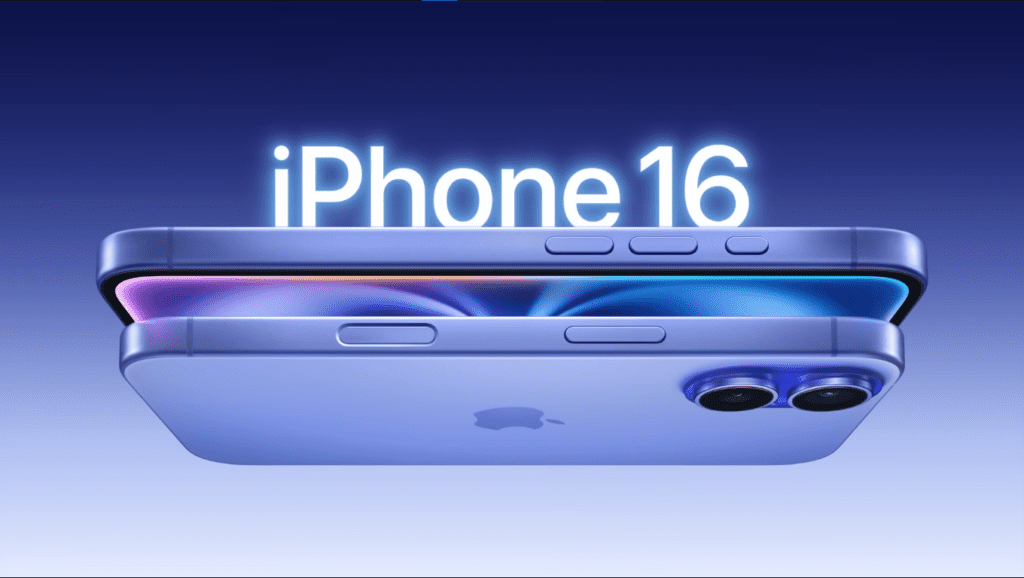Should You Ditch Your iPhone 15 for iPhone 16

The iPhone 16 is here, and as expected, it brings with it a handful of new features and enhancements. But the real question is, should you be rushing to upgrade from your iPhone 15? Let’s find out the key differences between the iPhone 15 and iPhone 16, breaking down performance, camera improvements, design changes, and usability. By the end, you’ll have a clearer idea of whether the upgrade is worth it for you.
The A18 Chip: Enhancing Performance and AI Capabilities
One of the most significant upgrades in the iPhone 16 is the introduction of the A18 chip, which is built on Apple’s latest 3nm technology. For tech enthusiasts, this shift is monumental. The A18 isn’t just faster; it’s optimized for AI-driven tasks, making everything from photo editing to app switching more seamless.
The iPhone 15, with its A16 chip, was no slouch, but the A18 takes things to another level. Its processing power is not just about speed—Apple’s deeper focus on artificial intelligence means more efficient app performance, smarter background tasks, and faster machine learning operations. If you’re someone who uses resource-heavy apps or multitasks frequently, you’ll notice a smoother experience on the iPhone 16.
In addition, the extra 2GB of RAM on the iPhone 16 (up from 6GB on the iPhone 15) enhances the phone’s ability to handle more AI and computational tasks without a hitch. This added memory helps with everything from running complex apps to future-proofing your device for upcoming iOS updates.
Camera Upgrades: the 48MP Sensor and Spatial Video Feature
Cameras have always been a big deal for iPhone users, and with the iPhone 16, Apple keeps pushing the envelope. The main camera still sports a 48MP sensor, but now, there’s Spatial Video recording capability. This feature is especially exciting for users who want to dabble in immersive experiences using Apple’s Vision Pro AR/VR headset. It allows you to capture 3D-like videos that can be viewed in augmented reality, which opens up a new world of creative possibilities.
Another new feature is the Camera Control button, a customizable, capacitive button that makes it easier to focus, adjust exposure, and capture images quickly. This feels like a quality-of-life improvement for those who frequently use the camera, allowing for more precise control of your shots.
However, in terms of hardware, the iPhone 16’s camera setup remains largely similar to the iPhone 15, with the same 48MP main sensor and 12MP ultra-wide lens. A small improvement comes in the form of an aperture upgrade (f/2.2 instead of f/2.4 on the ultra-wide), which should help capture better low-light shots. Another welcome addition is macro photography support, previously limited to Pro models.
Design Changes: Subtle but Significant
At first glance, the iPhone 16 might look a lot like the iPhone 15, but there are notable design refinements. Most prominent is the shift to a vertical camera alignment, replacing the diagonal setup seen in the iPhone 15. This new arrangement not only gives the phone a fresh aesthetic but also accommodates some of the new camera features like Spatial Video.
In terms of materials, the iPhone 16 retains the frosted glass back introduced in the iPhone 15, but the colors are updated to reflect current trends, with options like green, pink, blue, black, and white. For users who care about the look and feel of their device, these cosmetic updates may be appealing.
Battery and Charging
Battery life is always a hot topic, and the iPhone 16 brings a slight bump over the iPhone 15 in this department. Apple claims that the iPhone 16 can handle up to 22 hours of video playback, compared to the iPhone 15’s 20 hours. While this 10% improvement isn’t groundbreaking, it’s still a welcome upgrade for those who use their phones heavily throughout the day.
On the charging front, MagSafe improvements make for faster, more efficient wireless charging. The magnets have been slimmed down, which might not sound like much, but it allows for better alignment and speedier charging when using MagSafe-compatible accessories.
Action Button and New Controls: The Everyday Usability Factor
Another subtle but impactful change is the introduction of the Action Button to the entire iPhone 16 lineup. First seen on the iPhone 15 Pro, this button replaces the mute switch and can be customized to trigger a variety of actions, such as opening the camera, starting a voice memo, or launching shortcuts.
This customizable button replaces the long-standing mute switch, offering a more versatile tool that can be tailored to fit your daily needs. Whether you’re a power user who needs quick access to specific apps or simply enjoy the convenience of a customizable button, this feature adds a level of personalization that the iPhone 15 lacks.
Additionally, the Camera Control button mentioned earlier adds another layer of usability, especially for those who prioritize photography. These small but meaningful changes make the iPhone 16 feel more intuitive and responsive to user needs.
So my friend, Should You Upgrade?
After reviewing the key features and comparing them with the iPhone 15, the decision to upgrade boils down to how much you value the specific enhancements of the iPhone 16. The A18 chip and improved AI functionality make it a powerhouse for performance, while the camera updates, especially the introduction of Spatial Video, cater to early adopters of AR/VR tech. Design changes are subtle but add a fresh look, and battery improvements, though incremental, could be useful for heavy users.
If you’re someone who needs the latest and greatest or you see real value in the camera and AI advancements, the iPhone 16 is certainly worth considering. However, for most iPhone 15 users, the upgrade may not feel as essential unless you’re excited about the specific new features. If your iPhone 15 is still meeting your expectations, it might be worth holding off until the next major leap in iPhone technology.
But then again, if you are Elon Musk, who’s stopping you from buying. Go ahead.
Ciao.











